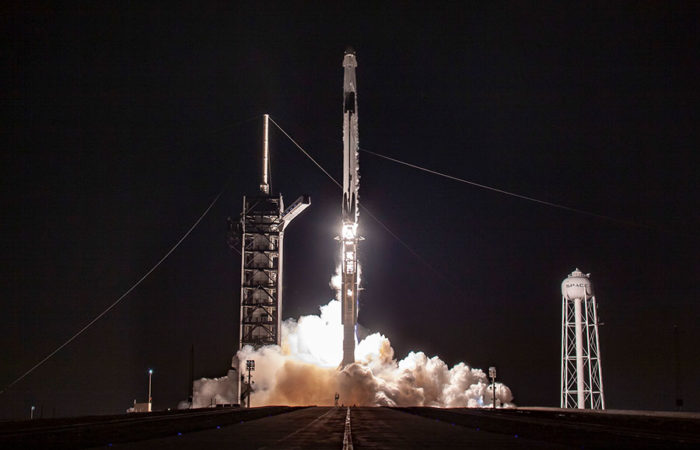
1400+ PAYLOADS LAUNCHED TO-DATE

Earlier yesterday morning, the SpaceX CRS-24 Dragon spacecraft docked with the International Space Station (ISS), carrying fourteen Nanoracks customer payloads, including nine educational experiments via DreamUp and Nanoracks Europe and five CubeSats. The Dragon launched atop a SpaceX Falcon 9 rocket on December 21, 2021 at 10:07 UTC from the NASA Kennedy Space Center’s Launch Complex 39A.
Check out the Nanoracks customer payloads on board this mission below.
Educational Research Experiments:
This Nanoracks mission includes the first two payloads launched under Student Payload Opportunity with Citizen Science (SPOCS), run in collaboration with DreamUp, and sponsored by STEM Earth at the NASA Johnson Space Center. SPOCS is providing the opportunity for five university student teams to develop, design, and build an experiment that flies to the ISS and returns to Earth. “Bacteria Resistant Polymers in Microgravity” was created by the University of Idaho’s Vandal Voyagers, and “Characterizing Antibiotic Resistance in Microgravity Environments” (CARMEn) was built by Columbia University’s Columbia Space Initiative.
Nanoracks also proudly launched three DreamUp educational Mixstix experiments sponsored by the Ramon Foundation in Tel Aviv, Israel. The experiments examine the effects of microgravity on the degradation of plastic by bacteria, the response of a community of intestinal microbes to antibiotics, and the effect of Moringa seed powder and copper pieces on E. coli cultures.
Additionally, Nanoracks launched a 3U Nanolab containing a system built by Tel Aviv University that detects solar and cosmic particles. The experiment goal is to measure cosmic and solar particle flux and characteristics on board the ISS and to calibrate a scintillator and SiPM detector, testing new hardware for signal detection and processing.
Also on board was a 1.5U Nanolab from the Lagrange Corporation in Japan, the sixth mission Lagrange has flown with Nanoracks. This experiment contains various plant seeds that will be used for teaching students about spaceflight. Additionally, Nanoracks launched the second Nanolab of a series with Montana State University, testing computer systems in the space environment to understand and develop greater resistance to the effects of radiation on computing systems.
Lastly, Nanoracks launched a DreamUp educational 1U Nanolab containing a materials science investigation from Aurora, d.o.o., which is conducting its experiment as part of the larger Qucopartex project in collaboration with students and the biotechnical faculty at the University of Ljubljana, Slovenia.
Lauren Milord, Director of Programs at DreamUp, said, “We’re thrilled to support so many groundbreaking educational investigations on this mission with our colleagues at Nanoracks. By engaging students in hands-on research opportunities today, we’re building the future of our STEM and space sectors in the United States and worldwide. We congratulate these incredible young scientists and look forward to seeing what they learn from their investigations.”
Nanoracks also integrated five CubeSats on this mission:
We’ll post on our Twitter account when it’s time for CubeSat deployment. You can follow along here.
Do you have an experiment you want to fly to space? Email info@nanoracks.com to get in touch!
Media Contact: media@nanoracks.com
